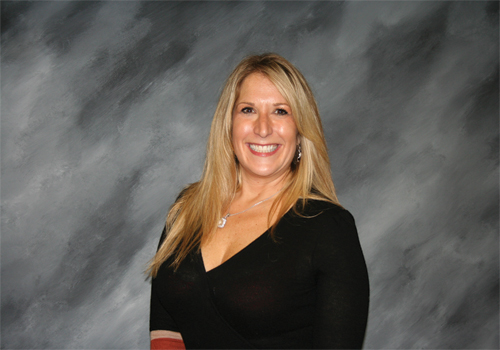
WholeFoods Magazine
State of the Trade

This interview first appeared in Marketing Natural Products™, a Digital Publication by The Shelton Group, Autumn 2014
As manufacturers and suppliers decide where to allocate their advertising budgets, what makes trade advertising a worthwhile spend?
Trade advertising is always an excellent investment for new product launches, as retail stores and businesses need to know about new merchandise before anyone else so they can stock their shelves with great options.
A trade magazine is the liaison between manufacturers and retailers, and a vital link between suppliers and manufacturers. In the natural products industry, retailer education is incredibly important because it shapes how products are sold to consumers. Trade advertising is often the first step in defining the message for retailers and the first place where stores come across new items. Retailers can’t sell a product if they don’t know about it and understand it.
Trade advertising isn’t just about highlighting what’s shiny and new; it’s also key for reminders and refreshers about existing items. As companies introduce new products, they shouldn’t let retailers forget the rest of their line. Trade advertising is the best venue for reminding stores about all a company’s offerings.
For suppliers of proprietary ingredients, the sell-through factor is a “must” for ensuring retailers know and trust their brands. Natural products retailers scrutinize labels, and often choose finished products based on ingredient brands they know. Trade advertising can help create that “must have” attraction for branded ingredients. In fact, some ingredient brands become synonymous with a product for both manufacturers and retailers.
What tips do you have for marketers seeking editorial coverage? Is there a right and a wrong way to approach trade magazine editors?
A good trade magazine editor will be open to all suggestions, as that is what completes their coverage and helps them provide the best education to their readers. That being said, a company can buy ad space, which is different than editorial coverage. Money should not be exchanged for editorial.
In trade publications like WholeFoods, there is often very little room for contributed company-focused features, so do not pitch a complete article on your company. Our take on it is that there are so many incredible companies in our industry and as much as we’d love to feature each one, we can’t. And picking just one or two is not responsible journalism.
As for coverage of products, it is always best to just let editors know about what’s new and unique about an item, and let them decide how they can work it in best. WholeFoods editors do read press releases and want to write about new products at the right time, but marketers must also understand deadlines, space constraints and editorial topics already committed in our editorial calendar. Very often, we show companies our editorial calendar so they can go through it and see the best times to contact our editors.
In the age of marketing analytics, print advertising remains one of the toughest marketing tactics to measure. How do you suggest marketers determine its success?
I recommend a combined advertising schedule with both print and digital outreach for several reasons. First, we have a very active circulation base that reads WholeFoods Magazine in print and online; some spend more time with the magazine in hand, and others on our site. By advertising in both places, companies won’t miss anyone. Plus, we offer numerous online exclusives, which draw even more readership to our online content. We also encourage our print readers to visit our Web site regularly for the latest news and updates. At the same time, our readership surveys tell us that WholeFoods readers keep their monthly print issue for years, and refer to old articles and ads when they’re looking for information.
But how the manufacturers can measure the value of advertising is tricky. Leads are the best way, whether through your Web site, phone calls, reader service leads or by spikes in sales following an ad placement. For finished products offered through distributors, it is very hard to keep track. But if they have to reorder, that’s a good sign.
Advertising works best with frequency. Using codes in your ad can help companies keep track of what’s working, but it is still hard to measure.
Literally, the best way is sales and ranking. Our industry has a few companies that offer reports to measure your sales such as SPINS. We offer a non-scientific page called What’s Selling, which is a survey of stores about their top sellers; it is one of our best-read pages. Sales people love seeing their products listed there.
Also many magazines offer added-value opportunities in various forms as well as content marketing. These are an excellent way to stretch a program and ad dollars. That is why we offer so many opportunities; the more impressions we can help an advertiser make, the more effective their ad will be. And use social media to drive traffic and generate buzz. There are so many things you can do with it to take your advertising results to the next level.
 You’ve seen thousands of ads in your magazine over the years. What comprises a well-designed trade advertisement?
You’ve seen thousands of ads in your magazine over the years. What comprises a well-designed trade advertisement?
Anything that catches attention is the best ad. A clean picture of the product and a great headline can work really well. Marketing experts say if people love a product in the ad, it will sell. You can be cute, but don’t push the envelope too far. Product is what sells your buyers. They want to know about the product and what makes it special, not a whole company history.
Don’t overcrowd your ad to the point that the reader does not know where to look and ends up just skipping over it as there is too much to comprehend at that time. Keep them on track.
Sometimes, having testimonials or a famous spokesperson help a product’s sales, but many times, the money invested does not get the return. Every once in a while, you might find someone who totally believes in the product and does not charge you a lot to vouch for it because they are sold already and believe in what they are selling; that’s the best!
It should go without saying that companies should never make unsubstantiated health claims in their ads; WholeFoods will never run ads that make such claims. We signed the Truth in Advertising agreement with the Natural Products Foundation, so we go over every ad as we know the FDA and FTC might see it.
Also, a good thing to remember is many of our readers are conservative, so you do not want anything too risqué. Keep ads in good taste. Funny is good, but don’t cross the line.
You also want to make sure all contact info is clear, including your Web site, phone number and all social media. They must see it to contact you.
Another thing to remember is presentation. We have many innovative ideas that help create a splash and draw attention like barn door covers, tabs, stickers, Post-its, sampling, bellybands and more.
So no matter your budget, getting your name out there via trade advertising is one of the best things you can do.
Why have printed trade magazines remained a strong part of this industry despite the emergence of digital media outlets?
Print still does very well in our industry. We are an industry based on education and retailers want to read to learn more and sell more. Many find it is easier to read longer educational stories in print, and most readers don’t sit in front of their computer all day, so it’s easier to flip through the pages. Our readers are very involved and want to bring their information with them and refer back to it at later dates.
Heather Wainer is the publisher of WholeFoods Magazine
Published on WholeFoodsMagazine.com, 9/12/14








